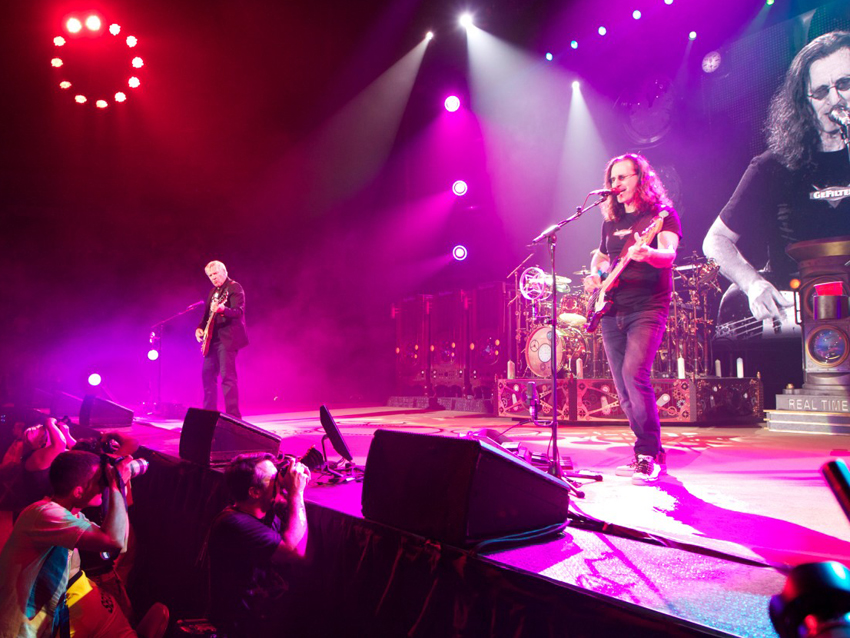Interview: Geddy Lee talks Rush's Clockwork Angels, track-by-track
Get it while the Geddy's good!
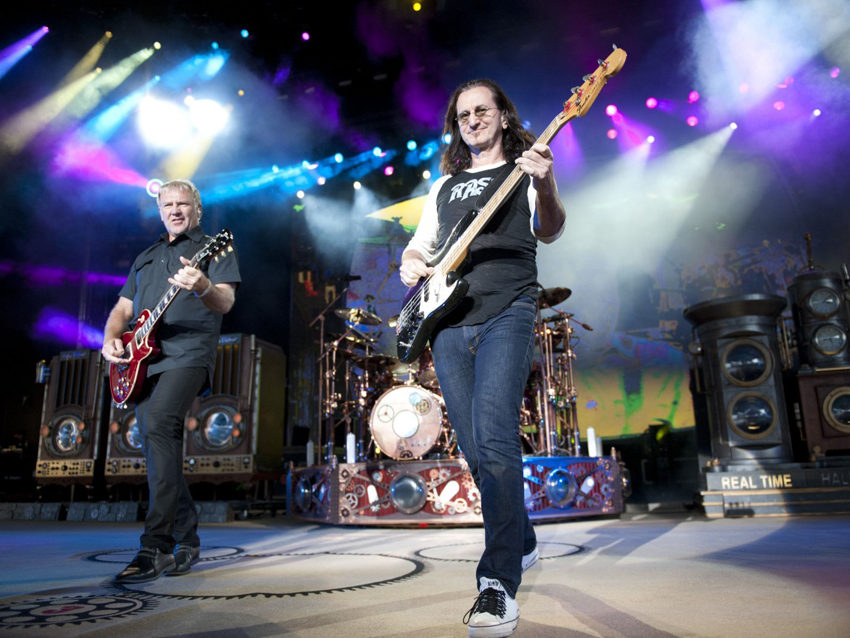
Introduction
Following chats with producer Nick Raskulinecz and guitarist Alex Lifeson, we sat down with Geddy Lee, bass player and vocalist with Canadian rock gods Rush to get his insight on the recording and writing sessions of their latest album, Clockwork Angels.
Written before, in and around the Time Machine tour, Clockwork Angels was perhaps the most eagerly anticipated album by the band to date, but it has since proved to be worth the wait – becoming acclaimed as one of the group's finest collections and selling over 103,000 copies in the US in its first week alone.
We spoke to Geddy Lee to find out his opinions on the album, the story that binds the collection together and how the fractured writing sessions benefited the concept.
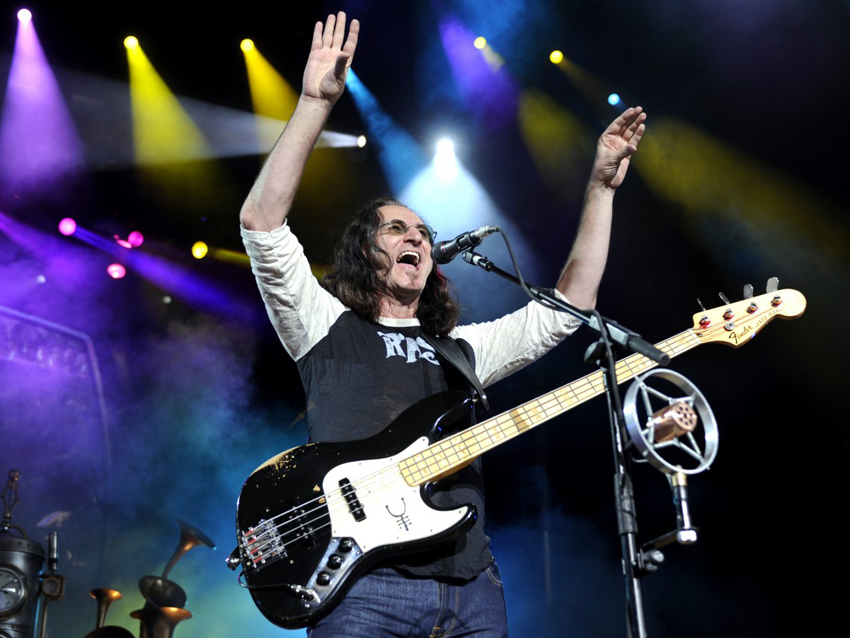
Caravan
“Caravan starts the story off; it’s basically about a young guy who’s got big dreams, big desires, and a very romantic vision of what the world’s supposed to bring him and he can’t wait to go out and see it. So he kinda runs away from home, stows away on the back of an airship. In our world airships are trains that fly! And yeah he sets off to find the world.”
“This was one of the two tracks we recorded in Nashville and both this and BU2B were the first pieces of music that Alex and I actually wrote for this album. So it’s interesting how a lot of this stuff came together. We wrote the songs in my basement studio in Toronto and because we had the Time Machine tour looming we had to kinda arrange a recording session very quickly so our producer Nick Raskulinecz, who was living in Nashville at the time, said come on down to Blackbird Studios and that’s what we did and recorded both those two songs in the two weeks beforehand.”
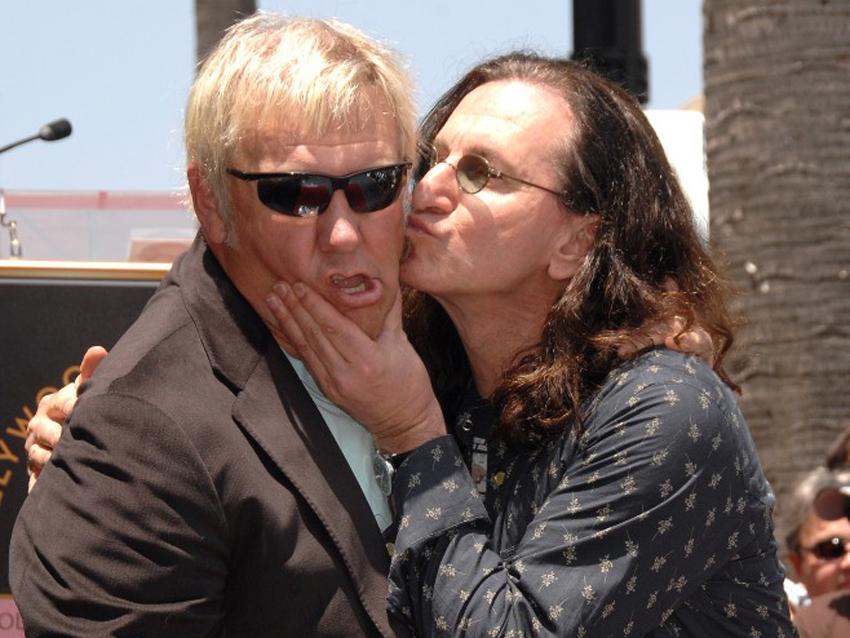
Clockwork Angels
“This was written at the same time as the first two songs and originally Clockwork Angels began as the soundscape that Alex had written on his own. He’d put together this really kind of wonderful synthesized/guitar/bass instrumental and sent it to each of us just for fun. It was something he was fiddling around and playing with on his computer and I really loved it.
“Once I’d heard it I said, 'Well can I play around with this as a vocal melody?' and he said ‘Sure’, so I messed about with it and the two of us added some power to it, took it from being such an atmospheric thing into more of a rock song. Of course the lyrics for that song were so imaginative that it really helped inspire the vocal melody.
“We’ve really developed and focussed on a part of our writing style - the theme change. It seems to suit us because so much of our music is sort of musical storytelling that we love to have that dynamic change of theme from one time signature or one feel going quickly into another. We’ve practiced that for twenty albums now and we’re finally starting to get it down!”
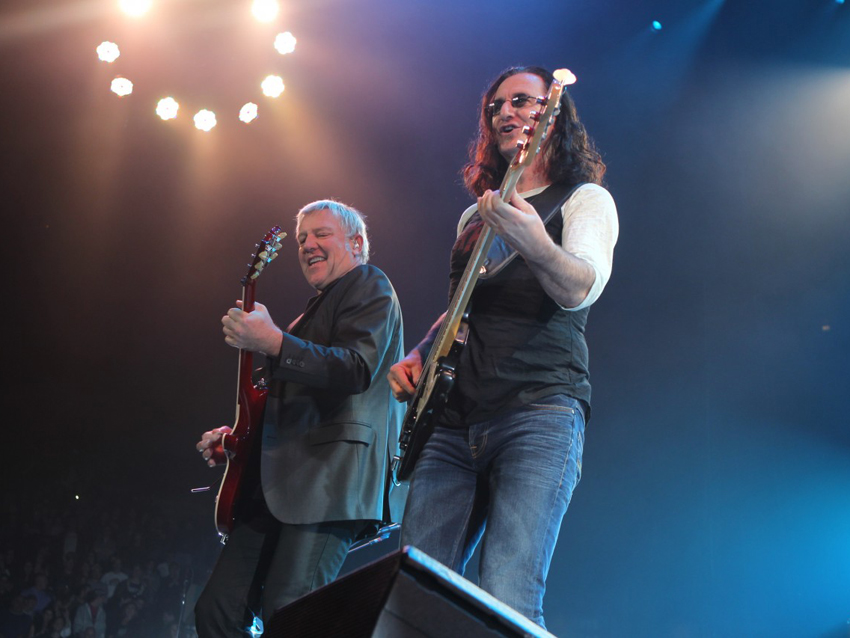
The Anarchist
“The Anarchist is another song from the original sessions. Alex and I had this great jam session based upon a drum pattern that we had written and created as a loop, which is the drum pattern that actually begins that song.
“That pounding tom tom fill was originally a drum machine pattern that Alex found and so that set the tone for a jam session that created some really driving music.
“The chorus part was the first part that we wrote and it was born out of a jam where I had written the bass line and Alex just slotted into it with great chord progressions.”

Carnies
“This was one of the newer songs, one of the last songs we wrote for the record actually and again it came out of a very good jam that Alex and I had. We did this jam session, just the two of us, in the middle of the Time Machine tour when we were on a break.
“I made a rule thirty-five years ago never jam with Alex without a tape recorder. I recorded all these things, then we kinda forgot about it and then in the fall of 2011 when we were earnestly trying to finish the record we got off to a very slow start.
“One of those jam sessions I looked into ended up becoming Headlong Flight, and the other one was the opening riff to Carnies. It just has a different feel for us, kinda slow heavy riff with me playing counterpoint to what Alex is playing.
“Everybody gets stuck once in a while and it’s not so much being stuck as you’re just kind of in the doldrums. I think it’s important to write everyday but not everyday you’re gonna write anything worth keeping and these recorded jams just helps you get through that."
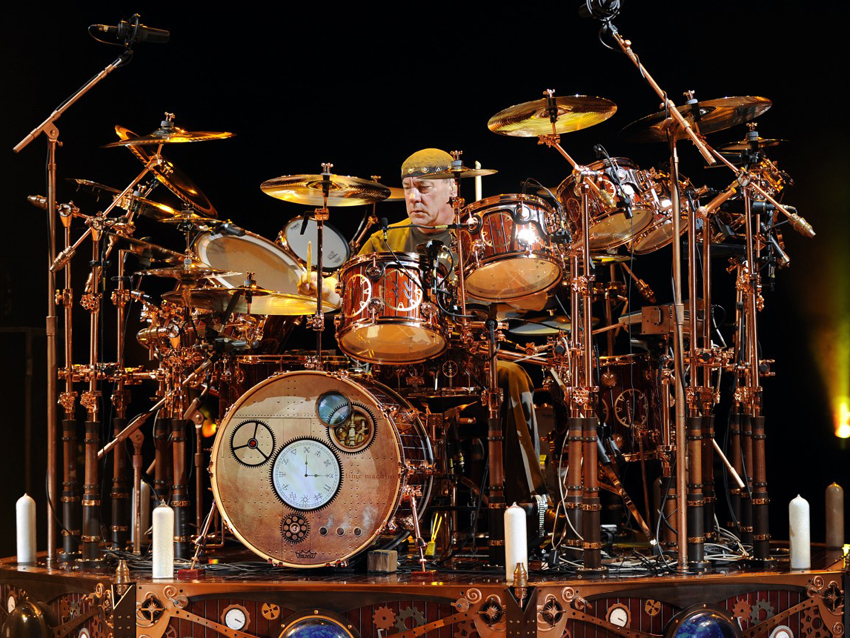
Halo Effect
“Halo Effect, was born definitely out of the lyric, it’s a beautiful lyric, one of the few that I didn’t change a whole lot (laughs) so we cut Neil some slack here as it’s just lovely the way he wrote it.
“We had done similar things like that in the past and we felt we needed a moment to catch your breath in the story and that’s why it began originally as completely an acoustic song but once Nick came in he felt that the choruses, or what we were choosing to call the choruses, needed to separate themselves from the verses to give the song more dynamics and that’s why it needed to be a bit heavier. So an interesting experiment in the ways of light and shade.”
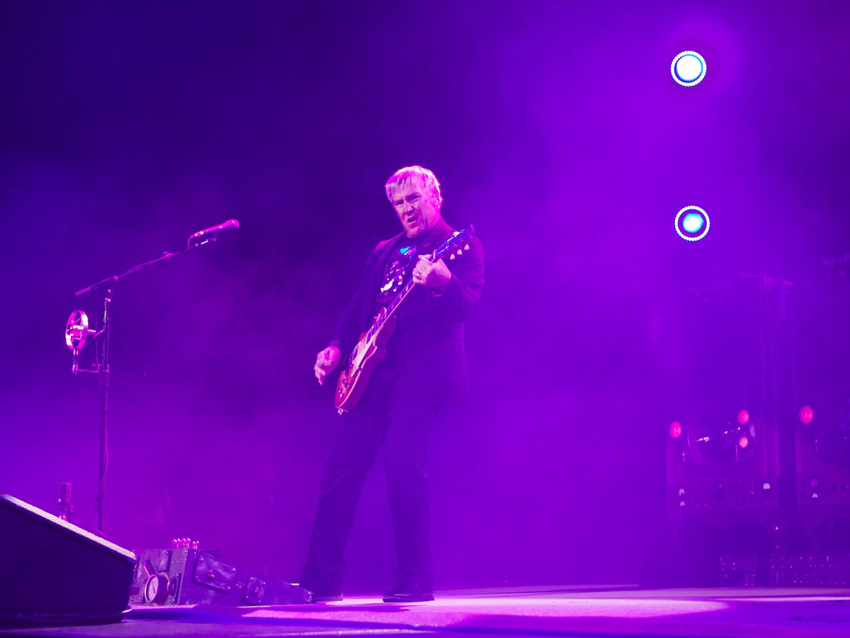
Seven Cities Of Gold
“This is a real fiery kind of slow burn and we don’t do that too often. It’s got a nice slow sleasy burn feel to it, it’s got this kind of militaristic drum pattern while I’m playing a kind of seventies white funk bass riff against Alex, who's pretending he’s Robin Trower (laughs).
“So it’s kind of an interesting fusion of different directions and it slowly all comes together in this riff that’s kinda reminiscent of One Little Victory in a way but it’s got a slower march to it.”
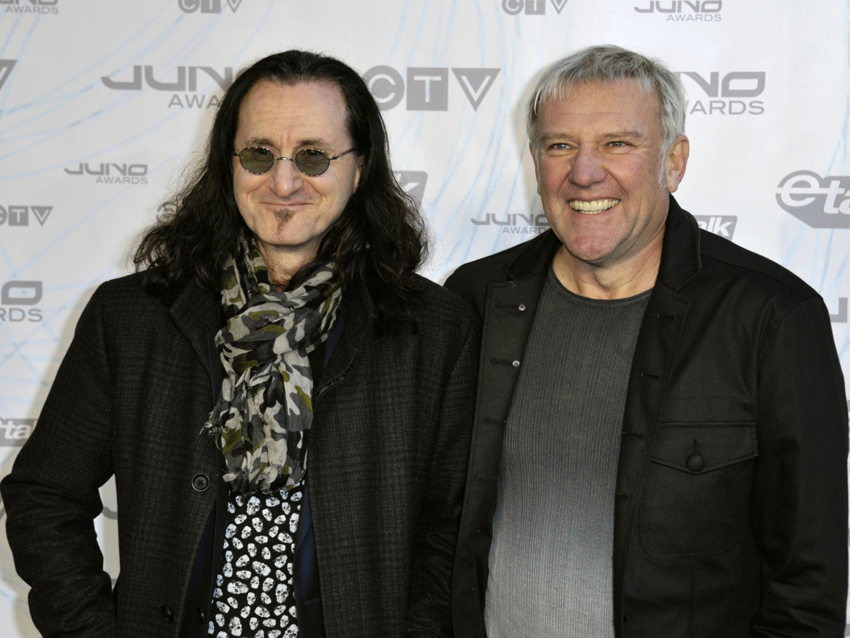
The Wreckers
“The Wreckers is one of my favourite songs and we wrote it on the wrong instruments! We were doing a jam session and the computer broke down so Alex and I went into the drum room where he had all these guitars lying around. I picked up one of the acoustics that was tuned to Nashville tuning. So I was having fun pretending I could play guitar and I happened to have the lyrics to The Wreckers handy, so before I knew it I kinda got inspired and I’d written the verse and the chorus.
“Alex liked the way I was strumming the chords because I was using strokes that he doesn’t and he grabbed the bass and started jamming with me on it and before you knew it he had written a cool bass part and so when the studio was up and running we put it down on tape.
“It almost sounded like the Bare Naked Ladies not Rush. When we got to the middle section, we wanted the song to really become much more dramatic and we were trying to visualise a storm that’s taking place in the story and the limitation of being on the wrong instruments betrayed itself, so we had to switch back and we turned right back into Rush and finished writing the song. But it was really a fun way of doing it.”
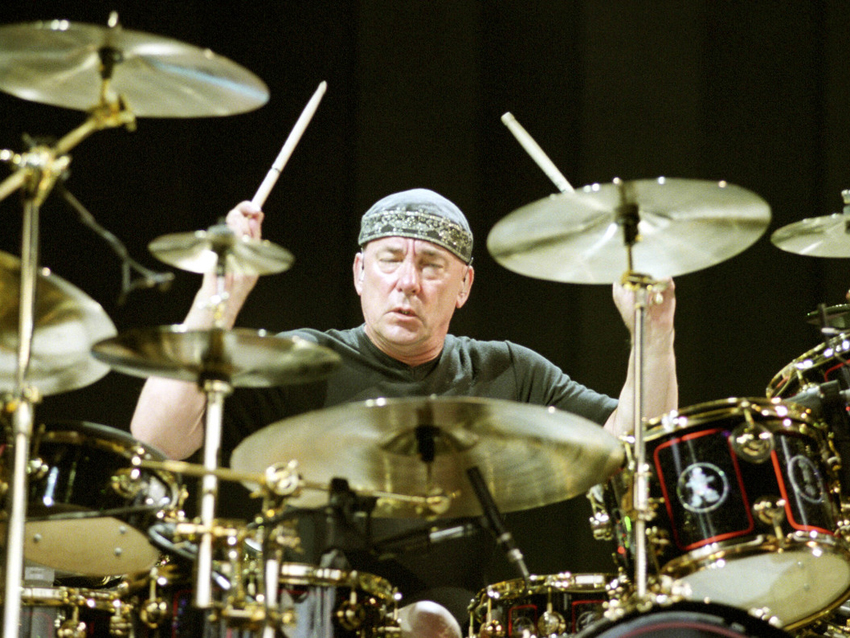
Headlong Flight
“This is one of my favourite songs that we’ve written in the last number of years and again it was born out of that jam session that I mentioned earlier from 2011 springtime.
“We’d constructed an instrumental called Take That Lampshade Off’n Yo’ Head and Neil had these lyrics for Headlong Flight. I loved the way the lyrics talked about our hero looking back over his life and seeing all the good and all the bad things he had done and yet he still came to the conclusion that if he was pushed he would do it all over again.”
“It became a great vessel for us, that song. We had moments that were kind of reminiscent of Bastille Day riffs and stuff like that, so because he was looking back over his life, we chose to look back over our musical life like that.”
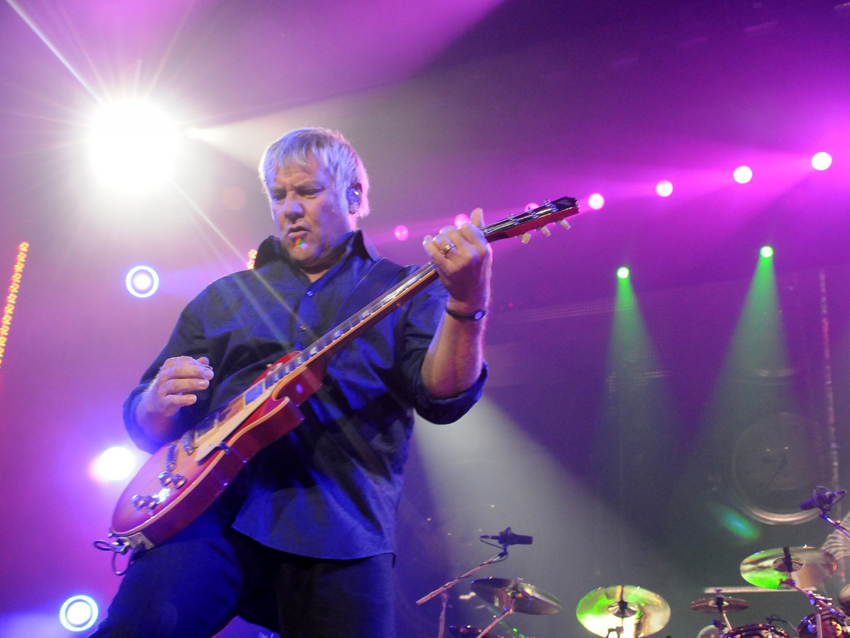
Wish Them Well
“Wish Them Well was the problem child of this record. It was one of the original songs we had written back in 2010, but the original version did not pass the test of time so we threw that away, started again, got close, wasn’t happening, threw that away and then on the very last part of the writing session in the winter of 2011 we gave it one more go out and I had a good jam session, or what we like to call a good six minutes, and I got some elements that were a little more like straight ahead rock.
“I was trying to turn it into more of a melodic song but it just wasn’t happening and it ended up as being set as a kinda straight ahead rock song and I’m really happy with it. There’s something special about it, especially where it comes up on the record after BU2B2 where you’re expecting to go into a down vibe and yet the song brings you right up off the seat. It stands on it’s own.”
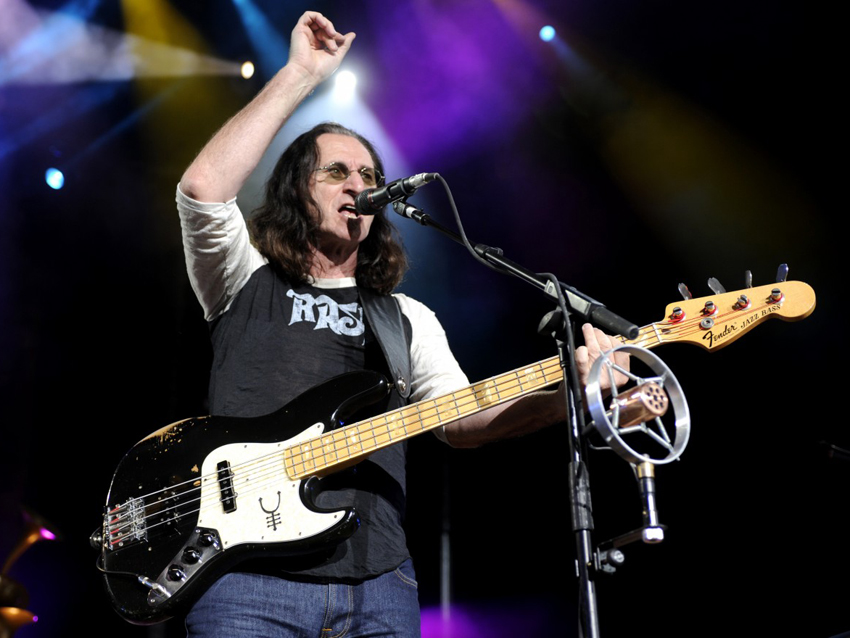
The Garden
“Again this is one of the original six and it changed almost not a hair from the original demo to its final version with the exception of a few more sophisticated performance embellishments and the additional strings.
“The original plan, we really stuck to it as there was something about the way we wrote that song that just worked from day one. It sounded authentic, relaxed and beautiful and really sweet. And that comes from having great lyrics too, the lyrics are beautiful, original in form and the song wrote itself.”
